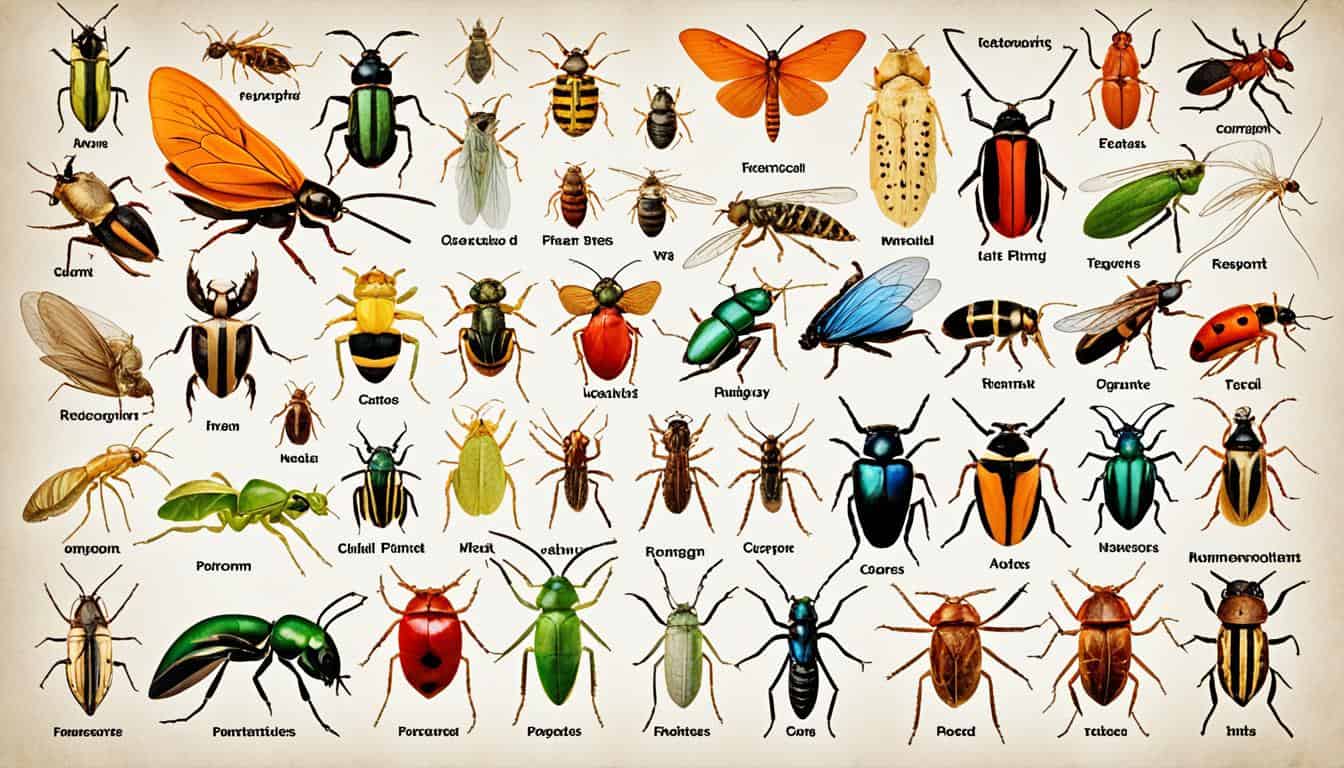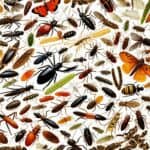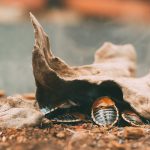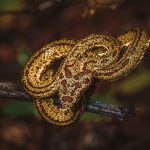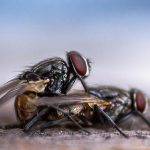Pests are always a worry in American homes. Each season, new insects and vermin show up in different states. It’s key to know what bugs you might face, to stop them effectively. Spiders, carpenter ants, termites, and cockroaches are most common.
Spiders are found in twelve states. They can live in different climates. Carpenter ants and termites can damage homes by eating wood. Cockroaches are tough and often found in dirty, city homes. Knowing about these pests helps pest control work better. It also helps homeowners keep their houses safe.
Spiders: The Most Common Pests in the USA
Spiders are the top insect pests in the U.S., often found in homes. They come in looking for food, mainly flies and small bugs. To cut down on spider visits, it’s key to know what they like and how to keep them out.
What Attracts Spiders?
Spiders like places where their prey, like flies, is common. Common insects in the U.S. serve as their main food. Spiders enter homes through small openings and dark spots. These spots give them a place to hide and hunt.
How to Prevent Spiders
To keep spiders away, focus on reducing their food and closing any entry points. Clean your home well to avoid lots of bugs. Plus, use door sweeps, fix cracks, and clear out clutter. Most spiders are harmless, but moving them outside helps nature stay in balance. This way, they help control other bug populations.
Carpenter Ants: Destructive Wood-Excavating Insects
Carpenter ants are big trouble for wood structures in the US. They love to live in damp or damaged wood. This can weaken the structure of your home, putting it at risk.
What Attracts Carpenter Ants?
In the US, carpenter ants come to places with lots of moisture. This includes places with leaks, damp basements, or wood that’s not treated. They often make satellite homes in these moist spots, which can mess up wood structures even more.
How to Prevent Carpenter Ants
Keeping these ants away means taking care of your home. You should work on fixing leaks and reducing moisture with dehumidifiers. Also, close up any openings in your home to stop them from getting in.
For really bad cases, call in experts in pest control. Carpenter ants are good at hiding, which makes getting rid of them yourself hard. Regular checks of your home and staying informed about pests can help keep them away.
Termites: A Homeowner’s Nightmare
Termites silently destroy homes, making them a big worry for homeowners in America. Knowing how to spot a termite infestation is key. It helps in controlling termites and reducing the damage they do to your place. Let’s look at what you should know about these home-wrecking pests and how to defend your home.
What Attracts Termites?
Termites love cellulose, which is in wood, cardboard, and paper. They prefer damp places, like those with bad drainage. Signs of termites include hollow wood, mud tubes, and their droppings. By removing these lures, you can stop termites from moving in.
How to Prevent Termites
Stopping termites starts with changing their habitat and keeping up maintenance. Here’s how to shield your home:
- Reduce Moisture: Fix leaks, ensure proper drainage around your home, and use dehumidifiers in damp areas.
- Remove Cellulosic Debris: Keep your yard free of wood piles, tree stumps, and other cellulose-rich materials.
- Seal Entry Points: Close gaps and cracks in your home’s foundation and walls to prevent termites from entering.
- Regular Inspections: Conduct thorough inspections of your home’s structure and foundation at least once a year.
Sometimes, professional help is needed for thorough termite control. This includes treating colonies and repairing severe damage. By combining these steps and getting expert support, you can keep your home safe from termites.
Cockroaches: Resilient and Ubiquitous Pests
Cockroaches are known for their hardiness and spread in American homes. They like places with water and bits of food. To fight them, you need to know what draws them and use good cleaning and pest control.
What Attracts Cockroaches?
Cockroaches come to your house for a few reasons. They like wet spots like from leaks and not fixing them helps. Plus, they need food areas to thrive. Since they can go a long time without food, they need water to live. So, keeping places dry is important to lower their numbers.
To stop them, keeping your home clean is crucial. This means cleaning your kitchen often and managing trash well. If they’re already a problem, pros can give you specific plans to get rid of them.
| Common Attractors | Reasons | Control Measures |
|---|---|---|
| Moisture | Essential for cockroach survival | Fix leaky pipes, remove standing water |
| Food Remnants | Provides sustenance | Clean kitchens, manage waste |
| Clutter | Offers hiding spots | Declutter living spaces |
In a nutshell, keeping your place dry and clean is key to stopping cockroaches. If they’re already around, getting professional help is a smart move.
Rodents: Unwanted House Guests
Rodents, like rats and mice, are not just annoying. They create health hazards and damage our homes. It’s key to spot signs of them early to protect your living space and loved ones.
Signs of Rodent Activity
Think you have a rodent problem? Watch out for their droppings and chew marks on furniture. Sounds in the walls or ceilings like scratching can also be a sign. Even finding wires or structures chewed can mean trouble for your home’s security.
How to Prevent Rodents
Keeping rodents out means taking steps. First, seal up spots like gaps in your home’s foundation, doors, and windows. Use containers that rodents can’t get into for your food. And keeping things clean and tidy helps keep them away, too.
If you’ve got a bad infestation, getting help from pros is wise. They can stop the rodents and help prevent them from coming back. This ensures your house remains a safe, rodent-free space.
Here are some preventative measures:
- Seal entry points, including cracks and gaps in walls, doors, and windows.
- Use rodent-proof containers for food storage.
- Maintain a clean, clutter-free environment to reduce nesting opportunities.
- Regularly dispose of garbage and manage outdoor spaces to discourage rodent habitats.
| Preventative Measure | Benefits |
|---|---|
| Sealing entry points | Prevents rodents from accessing your home |
| Proper food storage | Reduces food availability, deterring rodent presence |
| Clean environment | Limits hiding and nesting spots for rodents |
What are the most common pests in the USA?
Knowing where pests show up helps us fight them better. Different places have their own pest problems. This means we need special ways to keep them away in each state.
Geographical Differences in Pest Populations
Each state has its own set of pest troubles. Scorpions love dry, hot areas like the Southwest. On the other hand, places with milder weather might have more carpenter ants.
Because places vary so much, we must be smart in how we stop these critters. We need plans that fit what’s going on locally.
State-Specific Pest Trends
Every state’s weather and environment affect its pest problems. Warm, moist places often face termite damage. Meanwhile, colder spots might see lots of carpenter ants.
Understanding this helps us fight pests better. We can aim our efforts exactly where they’re needed. This way, we make more progress in each state against the pests that bug us.

Bees and Wasps: Beneficial yet Dangerous
Bees and wasps are important for pollination. But they can also be dangerous close to us. They might sting, which is a big problem if someone is allergic. Or they might get too aggressive when protecting their nests. So, it’s key to know how to deal with them to enjoy their good side while being safe.
Types of Bees and Wasps
Knowing the various types helps when it comes to safety and prevention. There are different common ones, such as:
- Honey Bees: They help with pollination and make honey. They’re usually calm but will sting if bothered.
- Bumble Bees: They’re big and hairy and help a lot with pollination. They might build their nests near the ground, so watch out.
- Paper Wasps: Look for these with their thin bodies and nests that hang. They can get very angry if their homes are disturbed.
- Yellowjackets: They look like honey bees but are meaner. They will sting you more than once and can be quite aggressive.
Preventing Bee and Wasp Issues
To avoid problems with bees and wasps, early action is the best. Here’s what you can do:
- Check for nests on your property in spring and summer, their active times.
- Close up any spots they could use to make a home in your walls or attic.
- Don’t keep food or sugary drinks outside, as they attract these insects.
- If you’re very allergic to bee stings, wear protective gear and have medicine on hand.
- If nests are found, call experts to handle them safely and fully.
Learning about these insects’ benefits and risks is vital. With this knowledge, everyone can work to keep beneficial insects USA and people in balance.
Fleas: Tiny Blood-Feeding Insects
Fleas are not just bothersome. They can spread diseases, making them a big worry. To fight off fleas, we need to know about the different kinds and how they act. This helps in choosing the best ways to keep them under control. Doing so keeps us and our pets safe and healthy.
Types of Fleas
Various kinds of fleas need different ways to get rid of them:
- Cat Fleas: They are very common and usually found on pets.
- Dog Fleas: Less seen, they mostly bother dogs but can also bite people.
- Human Fleas: They’re not often in people but can gather on us and other animals.
- Rat Fleas: These fleas are famous for spreading serious diseases like the plague.
How to Prevent Fleas
Stopping fleas starts with keeping things clean and acting ahead of time:
- Regular Pet Treatment: Always use flea control products for pets, as told by your vet.
- Clean Living Spaces: Remove flea eggs and young by vacuuming and washing pet items.
- Environmental Adjustments: Keep outside areas neat to stop fleas from living there.
Following these steps can greatly lower your risk of a flea problem. This means less worry about the diseases they can spread.
Silverfish and Earwigs: Common Moisture-Loving Pests
Silverfish and earwigs love humidity, which is bad news for U.S. homeowners. These insects eat your stuff, whether it’s paper, clothes, or other organic items. It’s important to keep an eye out for them to protect your home.
The key to controlling silverfish is tackling indoor dampness. Lowering your home’s moisture levels is critical. You can do this by improving ventilation, using a dehumidifier, and fixing any leaks.
Also, seal up any openings in your house. This stops silverfish from finding their way inside.
For keeping earwigs away, use similar methods. Clean up your living space to get rid of their food and hiding spots. Make sure your gutters are clean and plants near your house are trimmed.
This reduces moisture around your home, which can attract earwigs. It’s smart to check your home often and get help from pros to fight big bug problems.
Focusing on controlling moisture can help keep silverfish and earwigs out. Be alert, start early, and keep up with prevention methods. This is your strongest strategy against these bugs.
FAQ
What are the most common pests in the USA?
Spiders, carpenter ants, termites, cockroaches, and rodents are common pests in the USA. They vary by region and climate. Each can harm homes or health in different ways.
What attracts spiders?
Spiders are drawn to homes by insect prey. They come through small openings or under doors. Spiders look for places that are both safe and have food.
How to prevent spiders?
Keep spiders away by reducing bug numbers, blocking their entry points, and keeping your home clean. You can move non-dangerous spiders back outside to help nature.
What attracts carpenter ants?
Moist or damaged wood attracts carpenter ants. They like places where damp or rotting wood supports their nests. This can weaken the building’s structure.
How to prevent carpenter ants?
To stop carpenter ants, make sure your home stays dry, seal cracks, and check your property often. Fixing moisture problems and damaged wood is key.
What attracts termites?
Termites like wood and cardboard. You might see tunnels or piles of sawdust near their home. Check for these signs to catch them early.
How to prevent termites?
Stop termites by getting rid of wet spots, clearing yard clutter, and checking for damage regularly. For big problems, call in a pro to treat your home.
What attracts cockroaches?
Cockroaches need water and food to survive. They live in damp, dirty spots. Fixing leaks and keeping clean can help keep them out.
What are the signs of rodent activity?
Look for droppings, chew marks, and noises if you suspect rodents. They can spread disease and wreck your home, so act fast when you spot them.
How to prevent rodents?
Block off ways into your home, store food carefully, and change your surroundings so they won’t nest. A professional might be needed for bad infestations.
Are there geographical differences in pest populations in the USA?
Yes, the types of pests change by location. For instance, scorpions like dry places but carpenter ants are more up north. Knowing your area’s pests helps with control.
What are the state-specific pest trends in the USA?
Each state has its own pest problems. The South sees a lot of termites, while up North, it’s carpenter ants. It’s good to know this for effective pest control.
What types of bees and wasps are common in the USA?
Common bees and wasps include honey bees, bumblebees, paper wasps, and yellowjackets. They build nests in various places and have different behaviors.
How to prevent bee and wasp issues?
To avoid bee and wasp problems, find their nests and remove them safely. Keep your surroundings clean and stay away from their homes. For dangerous nests, get professional help.
What types of fleas are common in the USA?
The USA has cat and dog fleas. They don’t just bother pets; they can infect people too. It’s important to control them for your health.
How to prevent fleas?
Keep fleas away by treating your pets often, cleaning your home, and not giving them a place to live. Using all these methods together works best.

